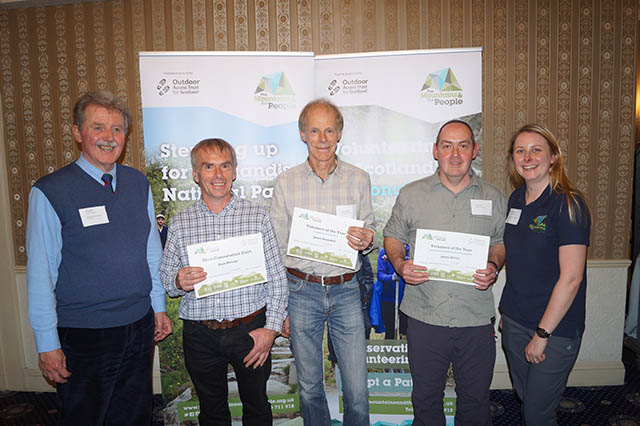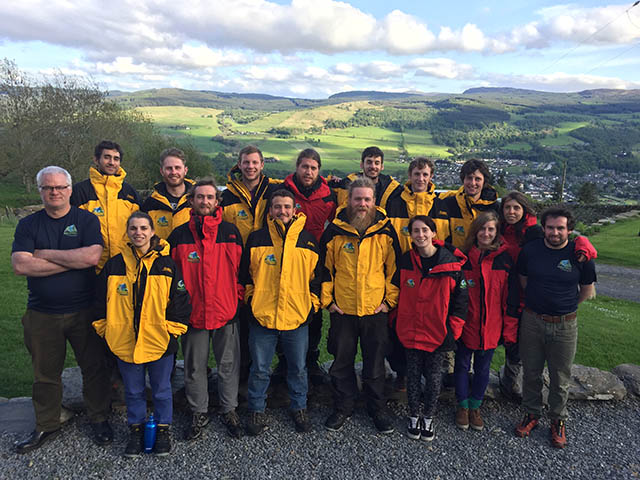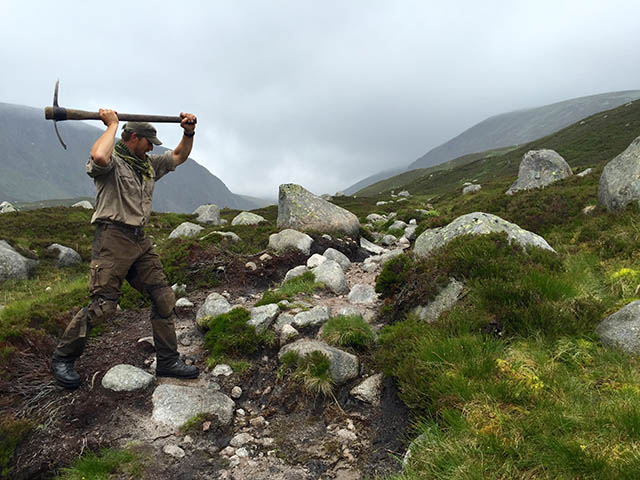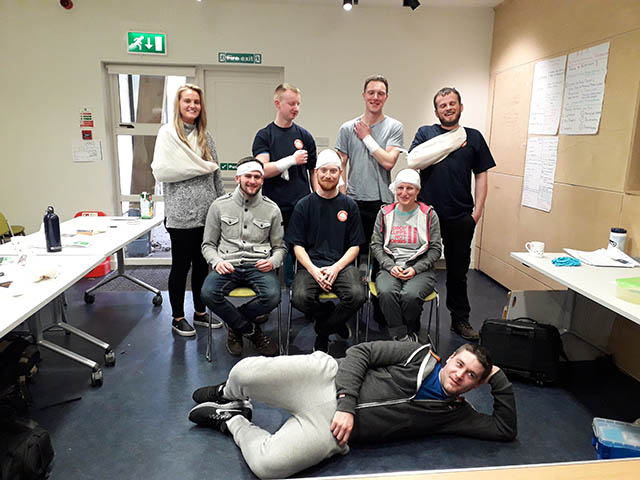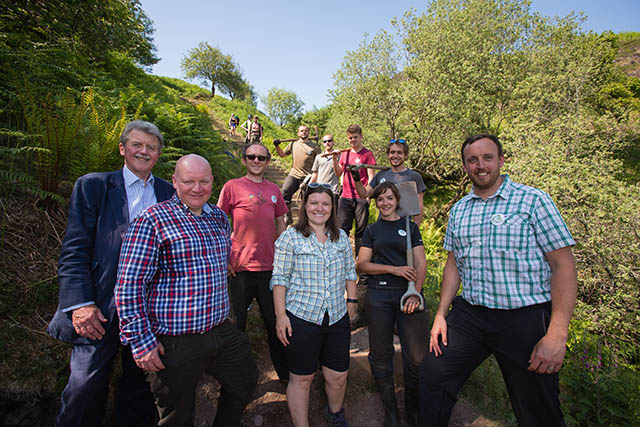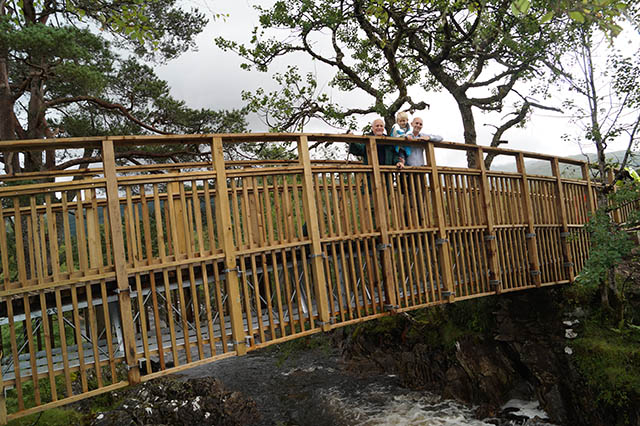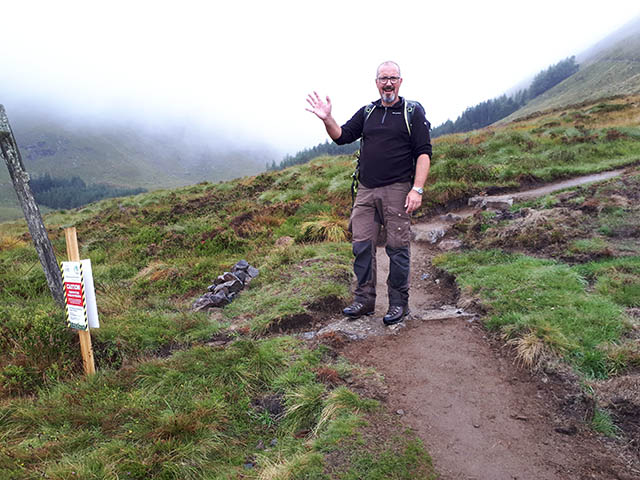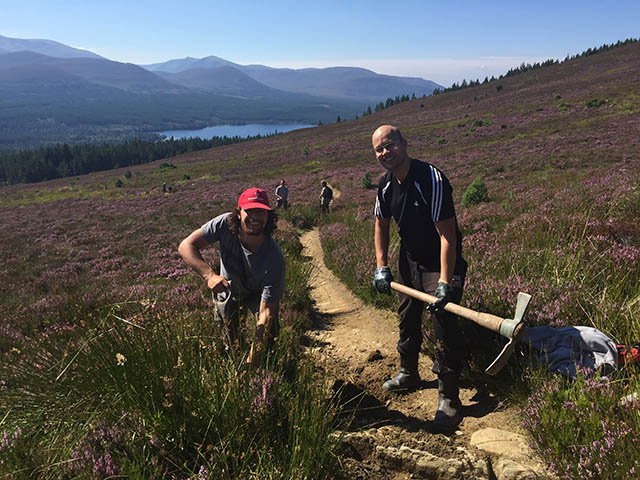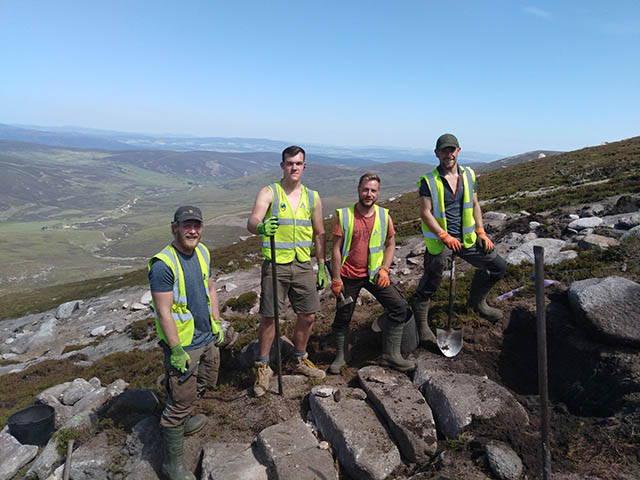

The Mountains and The People (TMTP) is the largest and most complex upland path project ever to be undertaken in the UK, and was nspired, initiated, planned and built by OATS.
OATS began planning the project and raising the £5.6m needed for it in 2013, with work beginning in 2015. It was finally completed with a project evaluation report in 2021, after the interruption caused by the coronavirus crisis.
Facts and figures from the project evaluation:
PARTNERSHIP
The £5.6M project was led, inspired, initiated, planned and built by OATS, in partnership with:
- The National Lottery Heritage Fund – 58% of project funding
- Cairngorms National Park Authority
- Loch Lomond and the Trossachs National Park Authority
- Forestry and Land Scotland
- NatureScot
OATS also contributed to the project using income raised through fundraising and consultancy, with fees from OATS car parks playing a big role in providing seed corn funding. The proportion of OATS funds required for this project was higher than in any previous scheme the charity has undertaken, with OATS providing £348k in cash and responsible for fundraising a further £460k from Charitable Trusts and Corporates as the project progressed.
PATHS
- 120,978 metres of path built or rebuilt
- 43% in Cairngorm National Park
- 57% in Loch Lomond and the Trossachs National Park
- 85% hand-built
- 15% machine-built
TRAINING
- 36 trainees completed SVQ2 in environmental conservation
- Five trainees completed SVQ3 in environmental conservation
VOLUNTEERING
- 203 volunteer work parties completed
- 45 paths adopted by volunteers through Adopt A Path scheme
- 1502 volunteer work-days completed
The evaluation figures are impressive. All of them and more are detailed in the final evaluation report for TMTP, available here
But the numbers are just part of the report’s story. It highlights how TMTP has given a major boost to the importance of path-building in the minds of land managers, path users, and public bodies.
The project has raised recognition of the economic importance of mountain paths, helped partner organisations get their messages across, boosted the path-building industry and inspired trainees and volunteers who took part.
Most of the trainees are now working in path-building and conservation, and their account of their experience in the report is inspiring: “It made me feel stronger and feel I can deal mentally with challenges,” said one, while another said: “It offered something you could put your heart into and get rewarded for, where you are inspired into motivating yourself.”
Volunteers said working on TMTP was “a great way to give something back to the mountains” and enjoyed the diversity among their fellow volunteers, with the scheme being called “a brilliant way to meet new, interesting and like-minded people.” One regular volunteer, Euan Ramage, now works in path building, he said: “TMTP opened a door for me to fulfil a dream, to finish my working days out on the mountains.”
The report highlights the digital education pack produced to tie in with schools and colleges, the work done within TMTP to engage with visitors, and how the project helped spread the word about path-building and its importance through the media.
The evaluation also talks about some of the difficult areas which have given OATS as an organisation valuable lessons, such as how to best deal with a wide range of stakeholders and the levels of management of individual sites that is needed.
And the report said the project will leave a lasting legacy in a range of ways.
It has created a model for training, developed a young workforce who will be in the profession for decades, and helped teach young people to value our mountains.
OATS are keen to expand the Adopt a Path programme to cover the whole of Scotland, and TMTP helped make the case for paths to be regarded as strategic public land assets by planners, paving the way for a more extensive paths network.
The paths repaired and restored include those on the “front-line” hills of the Trossachs and Arrochar Alps, subject to huge pressure as the closest mountains to Scotland’s central belt. Since then walkers have seen remarkable upgrades to paths such as those on The Cobbler and Beinn Ime, on Ben Ledi, and Ben A’an, protecting the mountain environment with unobtrusive yet durable builds.
One of the most notable “fixes” was the prominent path scar on the front of Carn Liath on Beinn a’ Ghlo, north of Pitlochry, so wide it could be easily seen from the main A9 road four miles away. After £264,000-worth of work it is now an unobtrusive but well-defined path which protects the surrounding environment and is enjoyable to walk.
Paths in the Angus Glens such as those up the Munros, Mayar and Driesh, and the popular Jock’s Road, have also been fixed, alongside routes on Deeside and others in Highland Perthshire and around Crianlarich and Tyndrum.
The project followed our Cairngorm Mountain Heritage project, a similar scheme costing £2.1m in and around the main Cairngorm massif.
Money for TMTP has come from the National Lottery Heritage Fund, the two national park authorities, Forestry and Land Scotland, Scottish Natural Heritage and OATS’ income raised through fundraising and consultancy, with fees from OATS car parks playing a big role in providing seed corn funding. The proportion of OATS funds required for this project has been higher than in any previous scheme the charity has undertaken, with OATS providing £348k in cash and responsible for fundraising a further £460k from Charitable Trusts and Corporates as the project progressed.
The work has been carried out by a trusted group of contractors, many of whose staff have learned their craft from OATS either on TMTP or on earlier schemes. This fulfilled one of the aims of TMTP to use the newly-acquired skills of those who completed the training course.
Around £40,000 is still needed to complete the TMPTP work. You can help with a donation. You can also help the future of these and other paths through our Adopt A Path scheme.

